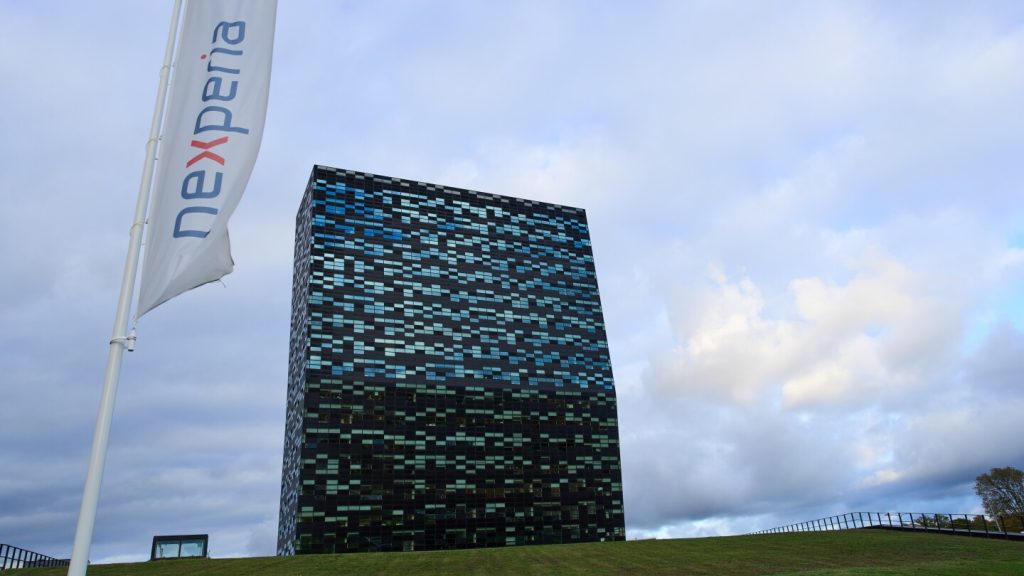The global supply of semiconductors, crucial components in modern vehicles and countless other technologies, faced a significant disruption recently. The dispute centered around Nexperia, a China-owned chip manufacturer, and the Dutch government’s intervention based on national security concerns. This article details the recent developments, the reasons behind the conflict, and its potential implications for the automotive industry and international trade relations. The resolution, while a step forward, doesn’t fully close the chapter on this complex issue involving Nexperia.
The Dutch Government Backs Down on Nexperia Control
In a surprising turn of events, the Dutch government announced on Wednesday that it would suspend its attempt to take control of Nexperia, a semiconductor manufacturer owned by the Chinese company Wingtech Technology. This decision effectively eases tensions between China and the Netherlands, which had threatened the vital flow of chips essential for the global automotive industry.
Economic Affairs Minister Vincent Karremans stated that the government would retract a previous order invoking a rarely used law from the Cold War era. This law allowed the Dutch government to intervene in the acquisition of companies deemed critical to national security. The initial move to assert control over Nexperia, headquartered in Nijmegen, stemmed from concerns about national security and “serious deficiencies in governance,” according to the government. Officials feared the potential loss of crucial technological knowledge that could jeopardize Europe’s economic security.
Why Was Nexperia Targeted?
The core of the issue lay in the ownership structure of Nexperia. While operating from the Netherlands, the company is ultimately controlled by Wingtech Technology, a Chinese firm. The Dutch government’s concerns were amplified when the United States placed Wingtech on its “Entity List” last year, subjecting it to export controls. This list identifies companies that pose a threat to U.S. national security or foreign policy interests. The expansion of this list in September to include subsidiaries like Nexperia further escalated the situation.
The conflict also involved the removal of Nexperia’s Chinese CEO, Zhang Xuezheng, who also founded Wingtech. U.S. officials reportedly urged the Dutch government to replace him to avoid potential trade restrictions. This led to a power struggle within the company and ultimately, the Dutch government’s attempt to gain control. The situation highlighted the growing scrutiny of Chinese investments in critical technology sectors in Europe and the United States.
Impact on the Automotive Industry
The potential disruption to Nexperia’s operations sent ripples through the automotive industry. Nexperia’s chips are widely used by car manufacturers in North America, Japan, and South Korea. In recent weeks, automakers had warned of potential production cuts due to the uncertainty surrounding the chip supply.
Honda, for example, was forced to temporarily shut down a plant in Mexico producing its popular HR-V crossover vehicle due to the anticipated shortage of Nexperia chips. The automotive sector, still recovering from previous chip shortages that hampered production during the pandemic, was particularly vulnerable to further disruptions. This incident underscored the fragility of global supply chains and the dependence of the automotive industry on a limited number of semiconductor suppliers.
A Step Towards De-escalation, But Not a Full Resolution
Minister Karremans framed the suspension of the control order as “a show of good faith” following “constructive talks” with Chinese authorities. The Dutch government believes this move will help restore confidence and ensure the continued supply of chips.
China’s Ministry of Commerce welcomed the decision, but cautioned that it was only a “first step” towards resolving the issue. The ministry emphasized that the Dutch court ruling limiting Wingtech’s control over Nexperia remains a significant obstacle. They called for continued cooperation between the two countries to find a lasting solution. The issue of semiconductor supply remains a critical point of discussion in international trade.
The Broader Geopolitical Context
This dispute is a prime example of how Europe finds itself caught between the United States and China in their ongoing competition for technological and commercial dominance. The U.S. pressure on the Netherlands to restrict Wingtech’s access to Nexperia demonstrates the extent to which Washington is willing to leverage its influence to protect its interests.
The temporary suspension of the U.S. expansion of the Entity List, lasting one year from November 10th, following a meeting between President Biden and Chinese President Xi Jinping, contributed to the easing of tensions. However, the underlying issues remain unresolved. The conflict over chip supply from Nexperia’s European factories to its assembly center in China continues, according to company reports. This highlights the complex interplay of national security concerns, economic interests, and geopolitical considerations in the global semiconductor industry.
What’s Next for Nexperia?
While the Dutch government’s decision is a positive development, the future of Nexperia remains somewhat uncertain. Wingtech has stated that if the Dutch government is genuinely committed to resolving the issue, it must formally withdraw its support for the court proceedings that led to the removal of Zhang Xuezheng as CEO.
Wingtech strongly rejects accusations made by Minister Karremans regarding Zhang’s alleged involvement in “various acts of mismanagement” and insists that no evidence has been presented to support these claims. Nexperia itself acknowledges the government’s move as a significant step forward but stresses that a full restoration of the supply chain requires further active collaboration between its Chinese and European operations. The situation requires continued dialogue and a commitment to finding a mutually acceptable solution that safeguards both national security and the stability of the global semiconductor supply chain.


